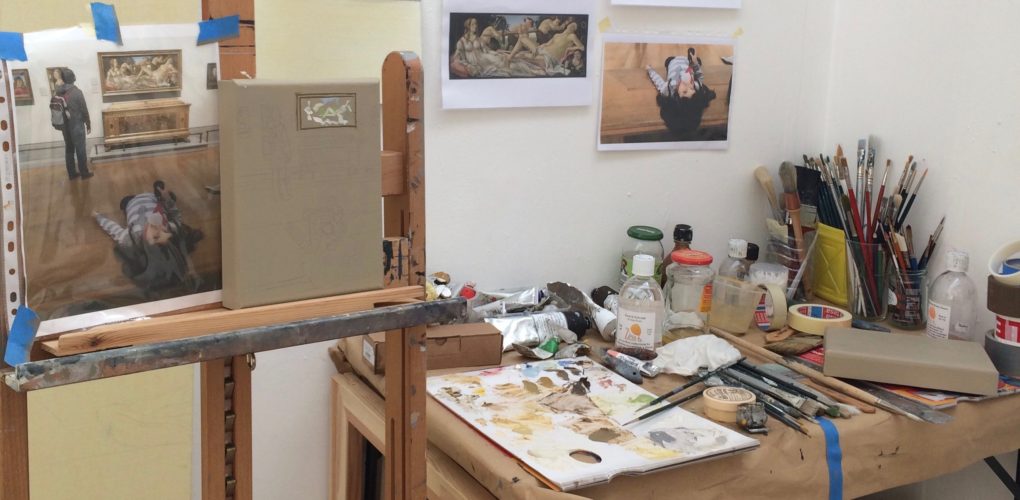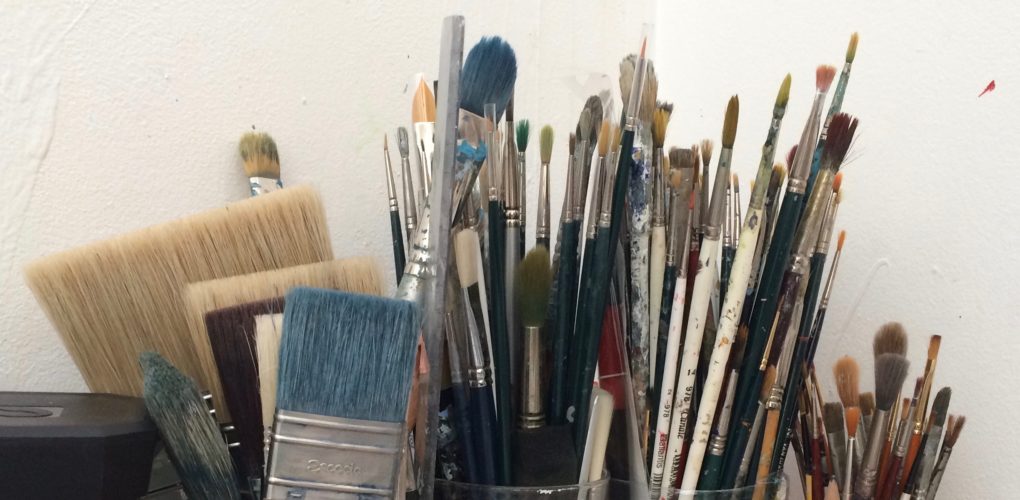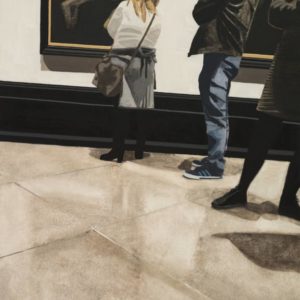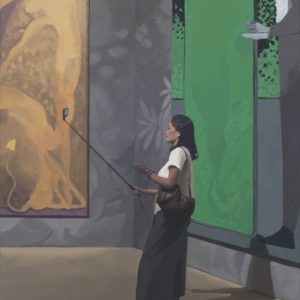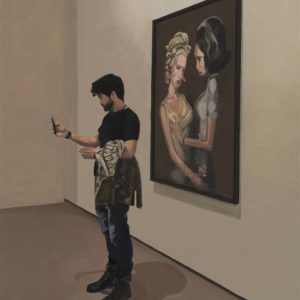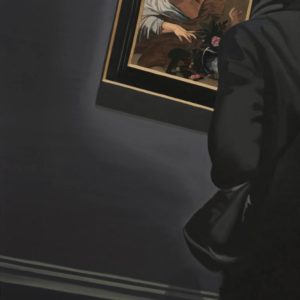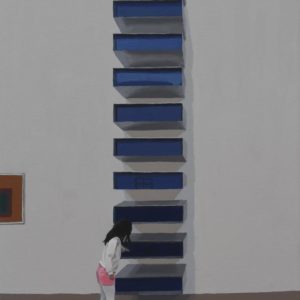Inside the Studio
 Elena García de la Fuente explores human behavior through figurative paintings
Elena García de la Fuente explores human behavior through figurative paintings
What are the major themes you pursue in your work?
I make contemporary figurative paintings that explore certain codes of behaviour inside the museum in a playful manner. When visiting exhibitions I become a voyeur looking for interesting scenes that catch my attention and taking photos of people without them noticing. I later use these photos as source material for my paintings, which make reference at how we’re looking and interacting with the world around us, touching upon themes such as the way we look at art through modern technology.
The paintings also reflect spaces of quietness and stillness that hold a poetic element, inviting us to meditate and create our own narrative. I’m interested in the meta-referential aspect of the paintings and the parallelism created by the scene represented and the moment the viewer faces it, realizing they have become part of the work and that they’re probably being observed by an audience: ‘If we discover how we see paintings we shall also discover something about ourselves and the situation in which we are learning’ (John Berger).
How did you first get interested in your medium, and what draws you to it specifically?
I’ve been using oil paint for the last two and a half years. I was drawn to it because it’s a very flexible medium and you can work in many different ways with it, like building up layers, working wet on wet, and glazes. Sometimes unexpected things happen and I like the playfulness of it. I was interested in the new possibilities that it could bring to my work.
How has your style and practice changed over the years?
At the beginning of my University years I was influenced by the Impressionists, and color was essential to my work. However, by the end of my degree I was experimenting with materials and doing more abstract work. After that I started working on portraiture, which eventually evolved into realistic paintings. What was important to me was to find a subject matter that interested me in order to explore in depth. I decided to look inside the art world having always taken photographs during my visits to museums.
Can you walk us through your process? Do you begin with a sketch, or do you just jump in? How long do you spend on one work? How do you know when it is finished?
The process starts during my visits to museums where I observe people looking at art and I take photographs. Later in the studio I go through the photos and select the ones that strike me and that immediately tell me something. I also look for interesting compositions and unique moments. Once a photo is selected I then draw the outline into the canvas. I finally build up the painting with layers. I start out with washes to work out tones and then I build up the detail with layers.
Prefer to work with music or in silence?
I definitely need music to work. The silence of the studio can be very overwhelming and music helps me get started. The key is to find music that suits my mood since it’s not always the same. Sometimes I need the tranquility of classical music, other times I’m happy working with soul, rock, dance or Latin music.
What are some of your favorite experiences as an artist?
I enjoy many of my experiences as an artist, from coming up with an idea, to making the work and the sense of accomplishment when the painting is finished. I also love the interaction with the viewer during exhibitions. I’ve had fascinating conversations regarding people’s reactions and connections to my work, especially with my latest series of people looking at art.
One painting that has brought many conversations has been ‘It’s Tough to be a Celebrity’ which shows a group of visitors in front of the Arnolfini portrait by Jan van Eyck at the National Gallery. One woman told me how she started collecting convex mirrors after seeing this painting. Another told me about a book in Russian inspired by this painting that told about the magical powers of the painting. Also a group of National Gallery tour guides were amused at seeing their daily lives at the museum and we discussed how frustrating it was that people are not longer looking at the paintings but are looking at the paintings from the screen of their mobiles.


